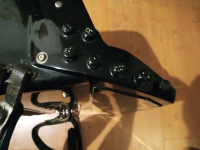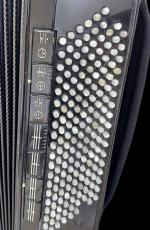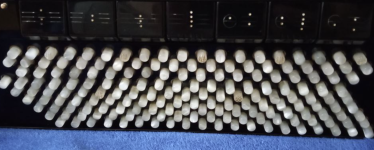I've gone through the Ellegaard book. It is a bit spars on MUSIC but it is strong on beginner level technique. I would really consider this a beginner level book, something that an absolute newbie would start with. If you look at other method books, they basically all start out in roughly the same manner, though some up the difficulty levels almost on a per page basis... lol
There are many C-system free bass method books out there, Ellegard, Rudy Molinaro, Neofonic Bassetti, and all the great resources mentioned in a different thread here and even all basic piano music once you know where the notes are. What it takes is the dicipline to make it happen and devote the time, so no matter even if you have 100 method books, none help if you don't go through them A-Z in a methodical and systematic manner.
The trick is to learn the basics (location of notes, scales, arpeggios), and then intersperse music at a ratio of about 10 to 1 (exercises vs musical pieces) at the start and then move to a 5 to 1 ratio once intermediate and then once the basics are in place find all the music that moves you at the level you are at and move up... but always work on the foundations, even if it is the first or last 15-30 minutes of your day.
Personally, I am trying out something new to me:
- each day that I play (which is not every day, but I am trying), start each day with 15 minutes of exercises
- work on ONE song for 30 minutes
- work on a SECOND song for 30 minutes
- continue until I feel I want to stop. If I have done 1 hour, thats FINE... more is better of course.
Secret sauce:
- To end the practice session, I do an exercise like perhaps a HANON and repeat it 5 times medium speed, then keep upping the speed until I burn my fingers out. Do it with 3 exercises. Remember which ones you have done, don't use the same ones but different ones... example, start with #1, #2, #3 then next day do #4, #5, #6, etc. The goal is to really push your limits and completely tire yourself out. Initially most will be able to do that in about 3-5 minutes, I am up to 15 minutes before my forearm muscles burn and fingers so tired I cannot play.

A high-level view of the goals... The practicing of the pieces is very focused and methodical. Once the technical aspects are done from start to end, the book is closed and I work on memorization and personal embellishments. Once comfortable with that, the song gets placed in to a different playlist (Repertiore) and reviewed once every couple of weeks. (let's see if that helps my overall repertiore retention and # of pieces). I'm mixing old pieces that I have played in the past with new pieces. My goal is to raise my playing to the next level, where ever that takes me.






